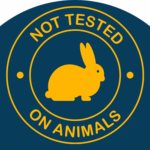Ensuring Safety: The Critical Importance of Flame Projection and Flashback Testing for Aerosol Products
By: Farah El Saad, JUNIOR LABORATORY TECHNICIAN, email
In the fast-paced world of consumer goods, aerosol sprays are a staple in our daily lives, from grooming essentials to household cleaners. But did you know that these convenient products can be dangerously flammable? Ensuring their safety is not just about following regulations—it’s about protecting people. That’s where the Canadian Consumer Chemicals and Containers Regulations, 2001 (CCCR, 2001) steps in, emphasizing crucial flame projection and flashback testing for aerosol products.
The Essence of Flame Projection and Flashback Testing
Why This Test Matters
The flame projection and flashback test are vital for identifying fire hazards in aerosol products. It measures two critical factors:
- Flame Projection: How far and in what manner does the flame extend from the aerosol spray?
- Flashback: The risk of the flame traveling back into the container, which could cause dangerous explosions.
Protecting Consumers
Consumers trust that their everyday products are safe. Rigorous flame projection and flashback testing uphold this trust, preventing accidents and injuries from unexpected fire hazards.
The Testing Procedure: Ensuring Accuracy and Reliability
Here’s how the flame projection and flashback test ensure safety:
- Preparation
- Conditioning the Product: Aerosol products are conditioned at 22±2°C (71.6°F) for at least four hours to simulate real-world usage.
- Controlled Environment
- Stable Testing Area: Conducting tests in a draft-free, well-ventilated environment ensures accurate results.
- Ignition Source
- Consistent Flame: Using a standardized butane flame provides reliable, comparable results.
- Measurement
- Recording Flame Behavior: Precise measurements of flame length and direction, repeated multiple times for consistency.
- Evaluation
- Analyzing Results: Comparing flame behavior against CCCR, 2001 standards to determine compliance and safety.
Criteria for Compliance: Ensuring Safety
CCCR, 2001 sets clear criteria for flame projection and flashback:
- No Flame Projection: Non-flammable and safe.
- Limited Flame Projection: Flames less than 15 cm (6 inches) require standard safety labelling.
- Extended Flame Projection: Flames between 15 cm (6 inches) and 45 cm (18 inches) need clear hazard warnings.
- Flashback: Flames traveling back to the nozzle indicate severe hazards, requiring stringent warnings.
The Vital Role of Accurate Labelling
Proper labelling is essential for consumer safety. Products with flame projection or flashback must display hazard symbols and warnings. Clear labels help consumers understand risks and use products safely, preventing accidents and building trust.
Maintaining Ongoing Compliance
Manufacturers and importers must prioritize CCCR, 2001 compliance to ensure ongoing safety:
- Routine Testing: Regular tests for all aerosol products.
- Updating Labels: Keep labels current with the latest test results.
- Staying Informed: Follow updates to CCCR, 2001.
- Quality Control: Implement robust measures during manufacturing for consistent safety.
Conclusion
Flame projection and flashback testing are essential for ensuring aerosol product safety and protecting consumers from fire hazards. By adhering to these tests, manufacturers show their commitment to safety, building trust in their brand. Regular testing, accurate labelling, and staying updated on regulations are crucial for maintaining compliance and ensuring aerosol product safety. Embrace these practices to foster a safer consumer environment where safety and trust go hand in hand.
Dell Tech has provided professional, confidential consulting services to the specialty chemical
industry in Canada, the USA, Europe, and Asia for the last 40 years.





